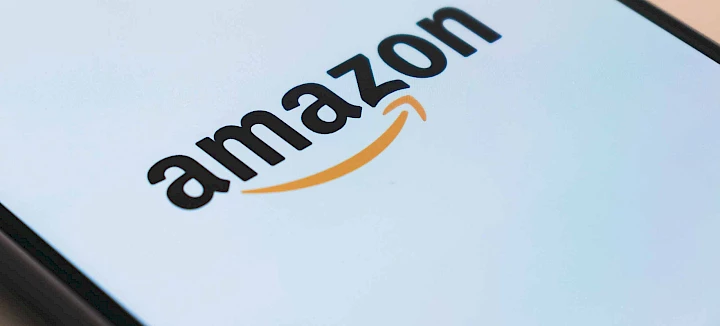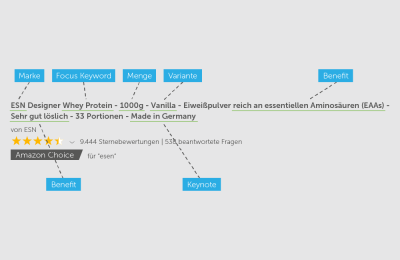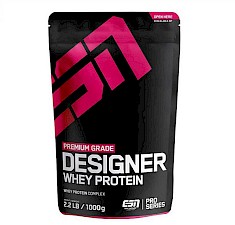
Successful Amazon product listing
More sales through Amazon listing optimization
As a retailer, offering your products on Amazon is not difficult in principle. However, becoming a successful Amazon retailer requires a little more than just registering and listing your own products. Amazon now has over 400 million listed products, there are around 2.8 million active sellers and an average of 3,700 new sellers are added every day. So the competition is fierce and it is important to stand out from the crowd and attract the attention of potential customers.
We will show you what you need to pay attention to when entering your products and explain the role played by the product title, images and product description.

How do you increase your sales on Amazon?
As mentioned at the beginning, Amazon product listings also depend on how goods are offered and presented. Nobody wants a monotonous shopping experience. In a market with a wide variety of products and a dense retailer presence, it is not enough to simply place your products on the shelf and hope that the customer will grab them and buy them. Product information and an appealing packaging design are essential in order to make a good impression on customers and ultimately be preferred over the competition. Just like in a store, a product on Amazon must be well declared and have a high-quality appearance for customers to choose you. Below you will find everything you need to know on this topic:

Phases of project planning
If you want to establish Amazon as a new sales channel, it is helpful to consider the phases of project planning: project definition, project planning and project implementation with controlling. The final phase is then project completion.
1. project definitionIn the first step, you should deal with a market and feasibility study in order to arrive at the most realistic assessment possible of whether implementation can succeed and to what extent a listing makes sense at all. In the case of Amazon, this primarily means realistically assessing the density of competitors, prices and saturation of the market.
In addition, it is advisable to carry out an initial small keyword research and check the corresponding search volumes. Similar to Google, Amazon uses a search algorithm that scans and indexes products for corresponding keywords. The keywords can be used in the product title, in the bullet points as well as in the product text.Important: A meaningless stringing together of keywords to try to outwit the search algorithm is not effective, as the relevance of the text is also crucial.
2. project planning
Once you have successfully completed the first phase, you can now go deeper into the planning phase. This includes, among other things: Time planning, product range and price planning, calculation of margins, fees, etc. In this step, the keyword research and search volume check from the previous phase should also be refined accordingly.
3. project implementation and controlling
One of the most important points besides formalities such as registration etc. is the Amazon listing. This point is discussed in more detail in this article in order to highlight typical mistakes and best practices when it comes to Amazon listings. Below we present the three main factors in the listing: Product titles, product images and bullet points. Sales and product texts on the item detail page are also important and should not be neglected. If the customer is not already convinced by the main image and product title on the search page, they will never see your lovingly designed sales text.
4 (Project completion)
You're probably asking yourself: "Why is this point left out?" Of course, you will complete the initial listing project at some point, but continuous optimization and analysis of the market and products (own and competitor products) is required in order to work profitably on Amazon in the long term.
80:20 rule - these 3 points determine 80% of your success on Amazon
The three most important factors of the product listing on Amazon are the product title, the product images and the bullet points in the product description. The product title and product images play a particularly important role, as they are seen first by the user. If the product is not convincing here, the user will not even click and will never see the product detail page with the information including bullet points. All the work invested here comes to nothing. In the following, we therefore present best practices for optimizing your Amazon listing:
1. product title: best practices
Use the title to give the customer the most important information on the search results page and encourage them to click on your product and not on the competitor's product! Provide the customer with the most important points on the search results page without them even having to click. Similar to the gymnast who seems to effortlessly perform a triple somersault from a standing position, the whole thing looks simple when it is presented. Unfortunately, it's not quite that simple!
The brand, quantity and variant are quite clear and the keywords can be found in the keyword research. But how do you best identify the benefits and keynotes? First of all, you have the opportunity to carry out an analysis of your own product. What can your product do and what added value does it offer potential customers? We then recommend that you carry out a competitor analysis. This does not mean that we simply use the titles of direct competitors' and best-selling products. Although this is also an option, we don't want to be as good as the competition, but better. That's why we look at the competition's products and analyze not only the title of the products, but also the reviews and questions. Then filter out what questions customers have about the competition's products and what is criticized and use this as the basis for your perfect product title.
The most important elements of the product title at a glance
- Brand: Name the brand .
- Keyword: The keywords that you have identified as particularly relevant through keyword research and the corresponding search volume.
- Quantity: Specify the quantity in the title.
- Focus Keyword: Use the focus keyword directly after the brand.
- Benefit: Highlight the most important features of the product in the title.
- Keynote: Highlight what makes your product special.

Example: protein powder
"ESN Designer Whey Protein - 1000g - Vanilla - Protein powder rich in essential amino acids (EAAs) - Very soluble - 33 portions - Made in Germany"
A very well-designed product title and not for nothing one of the top sellers including the "Amazon Choice" label in a highly competitive range. There are 3 points in the title, which were designed by a good competitor analysis:
- "Protein powder rich in essential amino acids (EAAs)": Competitor products with a clear declaration and a good amino acid profile are often praised and it is precisely this point that is emphasized in the reviews.
- "Very soluble": A frequently criticized factor in negative reviews.
- "Made in Germany": A common question for competitor products and an important factor for food in particular.
Specifically: We can optimize parts of our product title based on questions, negative and positive reviews of competitor products. However: Only choose things that your product also complies with.
2. product images: Best practices
In addition to quality, quantity is also crucial. Up to 8 images (1 main image and 7 additional images) can be used. If these are useful and of high quality, they should be used. Important: All images should be of high quality. Similar to dating apps, the customer is judged by the worst picture. One bad picture can destroy the impression of 5 good pictures.
- Brand: Brand names should appear prominently in the main image to ensure optimal recognition value .
- Product benefits: The images are used to visualize the product benefits. Only after viewing the product images and the title do most customers turn their attention to the bullet points or the product description.
- Product variant: Features that differentiate the product from other items of the same brand and product type (e.g. taste or color) should be clearly visible.
- How much is included: Customers should be able to quickly understand quantities, such as the number of products included or the filling quantity.
- Quality: Only use high-quality images! It's better to do without images than to use inferior or poor images!
Principle: Customers always rate based on the worst image.
3. bullet points: Best practices
Although the bullet points are very product-specific and less decisive than images and titles, they should not be neglected. Use the important parts of the title here and explain them further.
Another point is the competitor analysis and keyword research. Here you should analyze what the competition is highlighting. Draw any parallels from this. It is particularly useful if you have done thorough research for the title and have more material than you can include in the title. The research was not in vain. The bullet points are the perfect place to place this additional information from competitor, market analysis and keyword research.

Amazon Dealer Tools - the filter for the product jungle
Amazon is very large. There are therefore numerous tools on the market that can make your work much easier. Numerous providers offer their services with varying scope and functions in different price ranges.
Why can't you find a list of pros and cons of the various tools on the market here? Apart from the fact that there are already numerous lists on the Internet, there are various reasons for this:
- The scope of the tool depends on your needs.
- A retailer who wants to use Amazon as a primary sales channel should invest in a tool with more functions than a retailer who only uses Amazon as an additional business.
- Handling and user-friendliness are subjective. As with the Windows or Mac operating system, every user has their own preference. Every Windows user who sits down in front of a Mac will find the interface and operation incredibly complicated and vice versa.
Therefore: Inform yourself and test various tools on the market. Many tools have a free test phase during which you can put the tool and its functions through their paces.
We like to use Helium 10 in our day-to-day agency work to support numerous Amazon vendors and sellers. However, Helium 10 is a tool with numerous modules that can be used to monitor the ranking, keywords and search volumes of products in addition to product optimization, analyses and research. Keywords can also be stored directly in the tool. When writing product texts, bullet points and product titles, it is very easy to check whether these are being used sufficiently to give the Amazon search algorithm the right information.
Conclusion: A good Amazon listing - the path to success
Whether it's Amazon or your own online store - the e-commerce landscape is no longer a village, but a full-blown city: the key here is to score points with a good product presentation. Unlike in a village, where there are one or two stores, in the big city of e-commerce, the offer must be convincing at first glance.
A mature and optimized product listing is the most important step to success, alongside a good market analysis. In this area, as is so often the case, "practice makes perfect". If you are just starting out on Amazon, you will probably not create a perfect product straight away. However, you will find it increasingly easy and each product will also serve as a lesson in becoming a master.
If you are already listed as a retailer on Amazon and have a certain product portfolio, you may be able to expand and optimize your range using the "best practices" shown here and thus significantly increase your sales.

You need help with Amazon Listing Optimization?
We hope that you were able to pick up a few tips and tricks that will help you to optimize your Amazon listing. If you still have questions or need support as an Amazon merchant, get in touch now for an initial no-obligation consultation!












